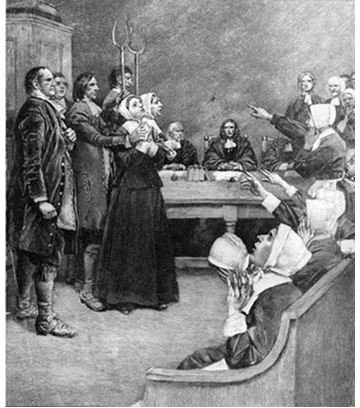Salem Witch Trials Webquest: A Project Based Lesson to Introduce 'The Crucible' by Arthur Miller
Like many high school students, I read The Crucible by Arthur Miller during my junior year of high school. As an avid bookworm and theater enthusiast, I thoroughly enjoyed bringing my part of Abigail Williams to life. When The Crucible appeared on my curriculum list after I became an English teacher, I was thrilled to have to opportunity to teach the play I had once enjoyed so much as a student.
However, my students seemed less than pleased when I told them we were reading a play about the Salem Witch Trials. Even worse, they couldn’t tell me much more about the Salem Witch Trials than, “A bunch of people went crazy a really long time ago, right?” When I said the word “Communism,” they were able to tell me even less. Not wanting to develop yet another dry lecture about the historical background of the play in fear I’d turn them off to it before we even began reading, I created the following lesson to not only engage their interest but also to give them a more personal lead-in to the twisted tale of Salem in 1692.
Lesson Objectives
By the end of the lesson, students will be able to:
- Present historical facts about research completed on the Salem Witch Trials and the Communist Scare of the 1950s
- Discuss and analyze parallels between the Salem Witch Trials and the Communist Scare of the 1950s
Materials Required
- Computers with internet access
- Poster board
- Microsoft Powerpoint or similar program
- Handouts <strong>(Download Here)</strong>
Lesson Procedure
Briefly introduce The Crucible to students Activate background knowledge by asking students what they think of when they hear “Salem Witch Trials” and “Communism” (This can be an informal discussion, or if you have a quiet class, you could distribute index cards, have students respond on them, then collect the cards and read from them anonymously.)
Distribute the project assignment sheet and have students form groups of two. Students will choose sets of historical figures to research. They will either research accused persons or accusers. See handout for a list.
Within their small groups, each student will have one person to research. There should be one person from the Salem Witch Trials and one from the McCarthy trials of the 1950s. (For example, one partner will research Arthur Miller while the other will research John Proctor.)
Project-based learning requires that students develop a question to drive their research. If your students are not accustomed to this, you can set an overall question for them. (For example, a good driving question for this project is: What similarities are there between the Salem Witch Trials and the McCarthy trials?)
Within that main question, students should follow the “5 Ws” to guide their research. See handout.
You may provide class time for students to complete internet research, or you may assign this project as out-of-class work.
After students have completed research on their assigned historical person, the small groups should reform and share their research with one another. The partners should take note of any parallels they see between the different time eras and trials themselves.
Students should then develop a presentation for their fellow classmates based on their research. The best way to do this is to have them follow the answers they found to their “5 Ws” and create a visual to go along with their findings. Because project-based learning lends itself well to differentiation, I offer my students a choice: They may either create a poster reflecting the two different people researched, or they may create a Powerpoint presentation.
Students will then present their findings to the class. Each presentation should cover information about the people researched and the parallels between them.
After presentations are complete, students write a reflection on both their research and the presentations they watched. In their reflections, students should outline what they have learned about both time periods and anticipate what they expect to read in The Crucible.
Assessment
Students can be assessed on the research they complete, their presentation of their findings, and their written reflection.
This project is a great way for my students to get acquainted with project-based learning. Additionally, I found that my students became more invested in the play as we read because they had particular names and figures they were curious about, and were eager to see how the story ended for each of those people. This project is also a helpful way to point out the changes Arthur Miller made to suit his needs.
For more teaching ideas on the Salem Witch Trials, see this article.
References
- Image in the Public Domain via Wikimedia Commons
This post is part of the series: Project Based Learning: High School English
These lesson ideas are a great start to adding project based learning into your curriculum.
- Salem Witch Trials Webquest: Project Based Lesson to Introduce “The Crucible”
- Music in “The Pearl” by John Steinbeck: Project-Based Learning Assessment
- American Poetry Anthology: A Project Based Learning Activity
- The Roaring ‘20s: A Project-Based Learning Activity to Introduce The Great Gatsby
- Seeing into the Future: A Project-Based Learning Analysis of Fahrenheit 451
- Review of the Writing Process: A Lesson Plan for High School Students
